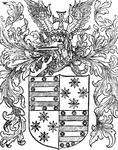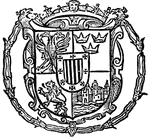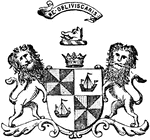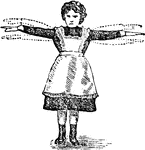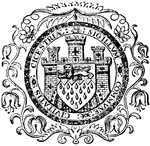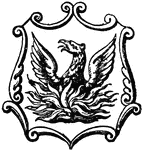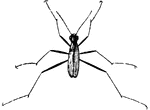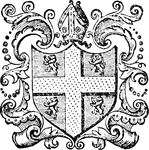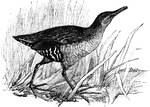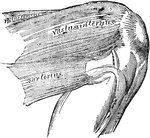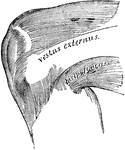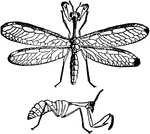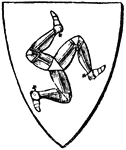
Charge
Human legs are not unfrequently born as charges in Heraldry, sometimes naked, sometimes booted, and…

Magnified Louse
"A genus of insects, the type of a very numerous family, which forms the order Parasita or Auoplura.…

Black-Faced Heath Sheep
"They are accordingly found on the mountainour parts of Yorkshire, Lancashire, Cumberland, and Westmoreland;…
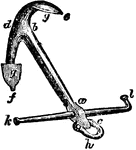
Common Anchor
"The shank is the straight part, ab; the square, ac, is that part of the shank to which the stock and…
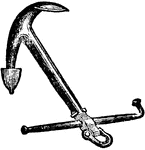
Admiralty's Anchor
"The Admiralty anchor differs only from the ordinary anchor in having a nut, a, worked on the square,…
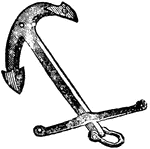
Rodger's Anchor
"The stock is of iron in large as well as small anchors, and is made with a mortice, to fit over the…

Trotman's Anchor
"The stock is of iron, similar to the Admiralty anchor; the shank is of rectangular section, somewhat…

Martin's Anchor
"The anchor is represented in the position in which it lies on the ground just before taking hold. The…

Bower Anchor
"A, is the cathead; B, the fish davit; C, and E, bollards; D, the bill-board. The anchor is held in…

Danglish Apparatus
"The Danglish apparatus consists of the following parts: 1st, a generator A, in which carbonic acid…
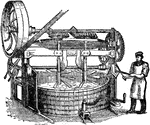
Vertical Mixer
"This machine consists of two vertical shafts, carrying radial arms. These arms pass each other in opposite…
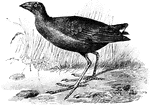
Black Backed Sultan
A bird that lives in the marshes. Has a stout bill and long legs, and more stately carriage. The plumage…

Gravity Train Remontoire
"E represents the scape-wheel turning in a minute, and e its pinion, which is driven by the wheel D…

Wood Tiger Beetle
A group of beetles known for being preditors. They have bulging eyes and slender legs.

Click Beetle
"Springing Beetles, Elateridae, are narrower and more elongate than the former, and their legs are so…

Duke of Clarence
"Lionel, Duke of Clarence, who also wears his mantle; and a younder brother not now to be identified…
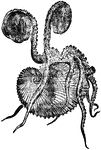
Paper Nautilus
"Argonauta argo, the "Paper Nautilus," female. The animal is represented in its shell, but the webbed…
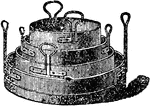
Set of Sieves
"Close to the place where the dredge is emptied there ought to be a tub about 2 feet in diameter and…
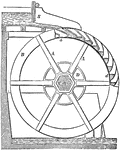
Water Wheel
"When a water fall ranges between 10 and 70 feet, and the water supply is from 3 to 25 cubic feet per…

Aurelia
"Development of Aurelia. Above to the left, young scyphistoma with four perradial tentacles. Below to…
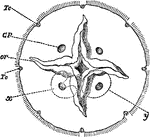
Aurelia Aurita
"Surface view of the sub-umbrella or oral aspect of Aurelia aurita, to show the position of the openings…

Aurelia Aurita
"Half of the lower surface of Aurelia aurita. The transparent tissues allow the enteric cavities and…
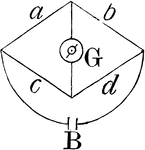
Wheatstone Bridge
A device used to measure an unknown resistance of a resistor by balancing two legs of a bridge circuit.
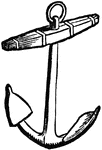
Anchor
"The vertical or supporting beam of the A. is the shank, B; at the upper end of it is the ring, r; and…

Scorpion
"Ventral view of a scorpion. Palamnaeus indus, de Geer, to show the arrangement of the coxae of the…
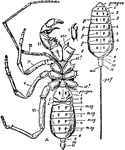
Thelyphonus
"Thelyphonus, one of the Pedipalpi. A, Ventral view. I, Chelicera (detached). II, Chelae. III, Palpiform…

Galeodes
"Galeodes sp., one of the Solifugae. Ventral view to show legs and somites. I to VI, The six leg-bearing…
Galeodes
"Galeodes sp., one of the solifugae. Dorsal view. I to VI, Bases of the prosomatic appendages. o, Eyes.…
Galeodes
"Galeodes sp., one of the Solifugae. I to VI, The six prosomatic limbs cut short. o, The eyes. b, c,…
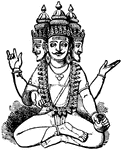
Brahma
"A Sanskrit word the Universal Power or ground of all existence, and also (in its masculine form with…
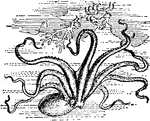
Octopus
"A genus of dimiliarly known as cuttle-fishes. They have eight arms, each with two rows of suckers,…
Lower Extremity
The lower extremity of the human body. 1: Head of femur; 2: Femur; 3: Patella; 4: Tibia; 5: Fibula;…
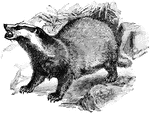
European Badger
About two feet in length of a heavy and clumsy shape, short legs, and short thick tail. Its fur is commonly…
